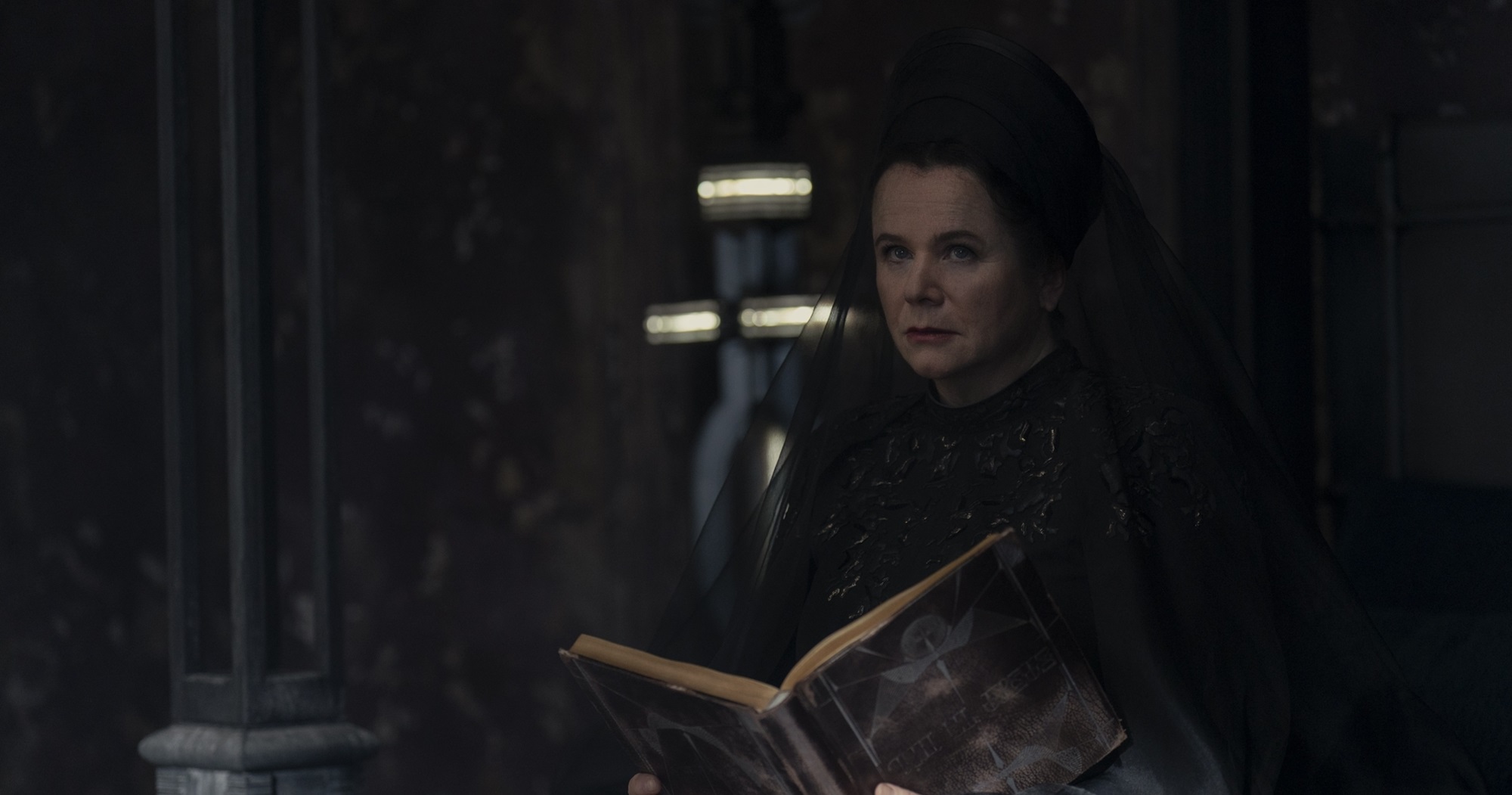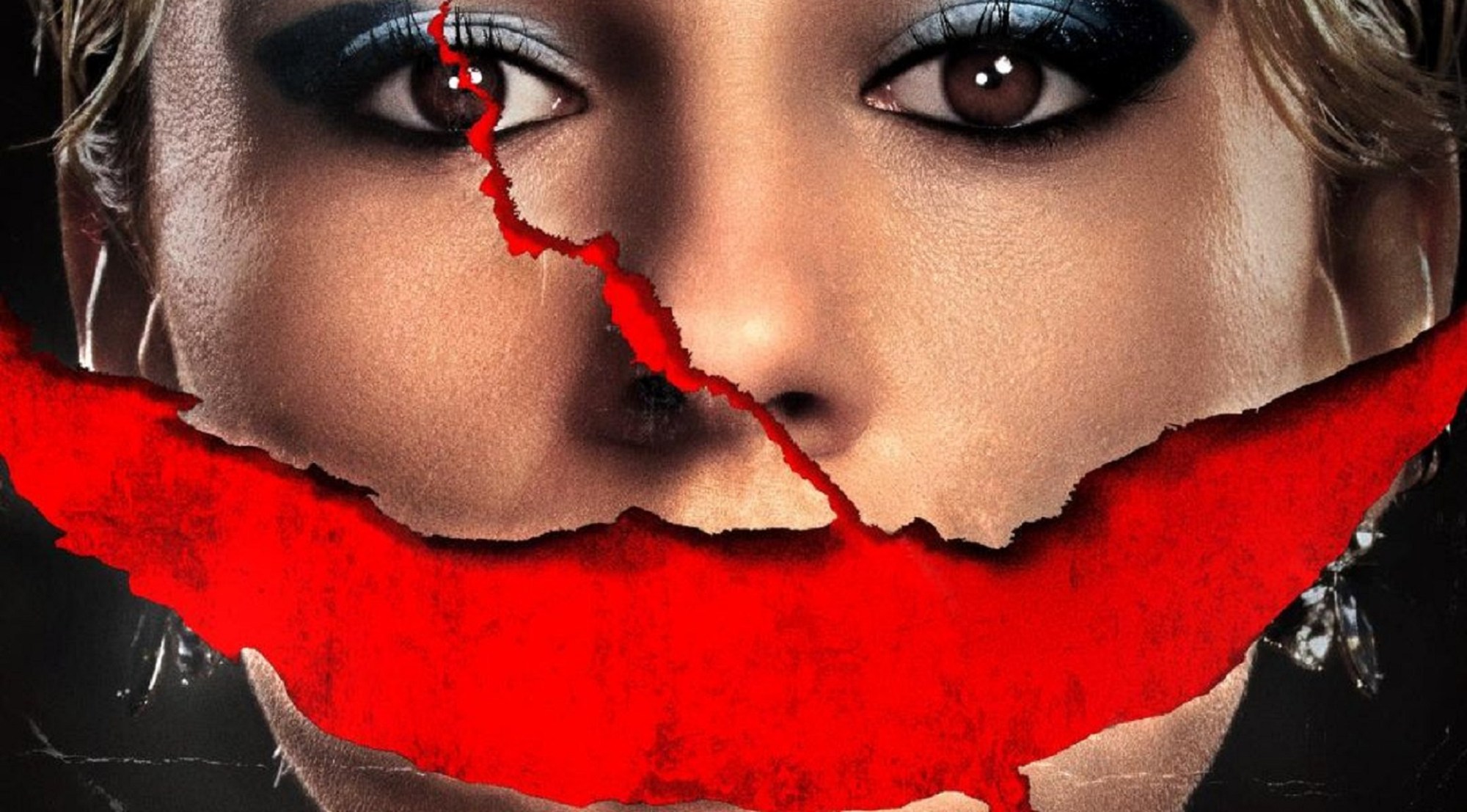Dune: Prophecy is still introducing new lore and sci-fi mechanics in Episode 4, “Twice Born.” The ending seemed to give us a glimpse of a unique type of being in the Dune universe known as a “Face Dancer.” Read on for more about this and how it will impact the next movie, but fair warning: there are spoilers ahead!
Videos by ComicBook.com
This week’s episode of Dune: Prophecy brought Valya back to Lankiveil, home planet of House Harkonnen, where she confronted her past and her family. She brought with her Sister Theodosia, whose “dangerous secret” turned out to be that they are a Tleilaxu Face Dancer. We first met Face Dancers in Frank Herbert’s second Dune novel, Dune Messiah (1969), which Denis Villeneuve intends to adapt into a third Dune movie. Now that we’ve met one of these characters here on TV, it should be a bit easier for audiences to get to know them on the big screen.
What is a Face Dancer?
While advanced technology is forbidden by cultural taboo in the Dune universe, some cultures are more forgiving of it than others. The Face Dancers come from the planet Tleilax, where extensive genetic engineering was allowed so long as it didn’t involve any artificial intelligence. Face Dancers are a group who have been genetically altered to have more muscle and nerve linkages throughout their bodies than natural humans. This, along with special training, allows them to have manual control over their own appearance, making them essentially shapeshifters.
[RELATED: Dune Prophecy Starts with a Subtle Reference to God Emperor of Dune You May Have Missed]
Face Dancers are typically employed as spies for the Bene Tleilax in the books, but are occasionally hired out to other organizations as well. Because they have no fixed physical form, they have a fluid sense of self-identity, making them almost like a hive-mind in some ways. The Face Dancers are completely engineered and born from tanks, and are themselves sexless and sterile. At the same time, they are created to be extremely intelligence and discerning, and to carry out missions even if it costs their lives. It will be interesting to learn if Theodosia was sent to the Sisterhood on purpose, or if they are acting on their own.
It’s worth noting that there are no Face Dancers in the trilogy of novels on which Prophecy is based. In fact, some fans online are questioning whether Face Dancers should even exist at this point in the timeline, considering that 10,000 years are supposed to pass between Prophecy and Dune. The books give no hint of when the Tleilaxu developed certain techniques and abilities, and they imply that their genetic research was often hindered in this early time period by anti-technology mobs. Still, this show has already veered far from the source material, and this is a change that has many fans excited.

Dune Messiah
Face Dancers will be much more important to the plot of Dune: Part Three – assuming Villeneuve finishes his planned trilogy. The sequel novel starts 12 years after the end of Dune, with Paul Atreides firmly in place as Emperor of the Known Universe and surrounded by representatives of other powerful groups – including the Tleilaxu. Now that Prophecy has shown us its take on a Face Dancer’s transformation, it will be interesting to see if Villeneuve and his team choose to depict it in the same way.
In addition to their Face Dancers, another of their technologies plays a central role – gholas. These genetically engineered clones can be made from the salvaged tissue of a fallen friend, but their loyalty can’t always be trusted.
Dune: Prophecy has two more episodes to go, airing on Sunday nights at 9 p.m. ET on HBO and Max. The books are available now in print, digital and audiobook formats. Villeneuve’s movies are also streaming on Max.







